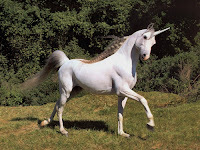Lemurs(Prosimians/Strepsirhini): a. Lemurs can be found on the island of Madagascar (an island
off the coast of Africa), and the neighboring Comores Islands. They are arboreal creatures and live most of their lives in trees.Lemurs live in a variety of habitats. Some live
in moist, tropical rainforests, while others live in dry desert
areas.
b. Lemur dentition is heterodent and derives from an ancestral primate permanent dentition of  . In the toothcomb of most lemurs, the bottom incisors and canine teeth are procumbent (face forward rather than up) and finely spaced, thus providing a tool for either grooming or feeding. The toothcomb in lemurs normally consists of six teeth (four incisors
and two canines), although indriids, monkey lemurs, and some sloth
lemurs only have a four-tooth toothcomb due to the loss of either a
canine or an incisor.
. In the toothcomb of most lemurs, the bottom incisors and canine teeth are procumbent (face forward rather than up) and finely spaced, thus providing a tool for either grooming or feeding. The toothcomb in lemurs normally consists of six teeth (four incisors
and two canines), although indriids, monkey lemurs, and some sloth
lemurs only have a four-tooth toothcomb due to the loss of either a
canine or an incisor.
c. The toothcomb, which is specific to Lemurs is a direct expression of their environment and habitat. It is useful in grooming and can be a handy tool in the harsh and diverse climate of Madagascar.
Spider Monkey (New World Monkey/Platyrrhini): a. Spider monkey's are found in the tropical rainforests of Central and South America. They thrive in evergreen, semi deciduous and mangrove forests and almost never come down to ground level. These monkeys live in the highest parts of the trees found in rain
forests, known as the 'upper canopy'. They prefer undisturbed high
forests.
b. Spider monkey dentition is similar to that of all New World monkeys. They have 2 incisors, 1 canine, 3 premolars and 3 molars in each quadrant.
c.
Since these primates are found high in tree tops their dentition has
developed to facilitate the easy consumption of whole fruit and leaves.
Baboon (Old World Monkey/Cercopithecidae): a. Baboons live in sub-saharan west and north Africa. This area is extremely dry and arrid.
b. Baboon dentition can be characterized by a more elongated arch form, prominent maxillary canine crowns,
and second and third molar crowns of greater size than first molar crowns.
c. Baboons eat mostly vegetation consisting of grasses, roots, seeds, but are known to eat small sub-saharan mammals such as hares and birds. This diet along with the behavioral adaption of showing their teeth to demonstrate dominance, has allowed for the evolution of this specific dentition.
Gibbon (Lesser ape/Hylobatidae): a. Gibbons can be found in the tropical and subtropical rainforests of India on Indonesia, China, and the islands of Sumatra, Borneo, and Java. They are arborean primates and spend nearly all of their lives in treetops.
b. Gibbons possess noticeable characteristics of their dentition. They have large, dagger-like canines in both the upper and lower jaw. These canines are not sexually dimorphic.
c. Gibbon canines are adapted for eating meat and much like baboons, for showing dominance.
c. Gibbon canines are adapted for eating meat and much like baboons, for showing dominance.
Chimpanzees (Great ape/Hominidae): a. Chimpanzees are divided into two subspecies within Africa. The common chimpanzee can be found in west and central Africa, while the Bonobo can be found in the Congo. The Congo River acts as the main dividing line between these two species, and they can be found in a diverse range of habitats from the rain forest to grasslands.
b. Chimpanzee dentition is similar to that of the Old World apes and human species. They are the most closely related to humans out of all the primates. They have 2 incisors, 1 canine, 2 premolars, and 3 molars in each quadrant.
c. Like many primates with pronounced canines, Chimpanzees most likely developed them due to the necessity for tearing and eating meat from flesh and to show dominance.
Summary: Through my findings I have found that dentition patterns in primates are mostly due to their diet. Behavioral patterns have played a key role in the development of prominent canines in some of the larger apes, and smaller, more predominantly herbivore primates developed more square flat teeth for grinding small leafs and fruits.
b. Chimpanzee dentition is similar to that of the Old World apes and human species. They are the most closely related to humans out of all the primates. They have 2 incisors, 1 canine, 2 premolars, and 3 molars in each quadrant.
c. Like many primates with pronounced canines, Chimpanzees most likely developed them due to the necessity for tearing and eating meat from flesh and to show dominance.
Summary: Through my findings I have found that dentition patterns in primates are mostly due to their diet. Behavioral patterns have played a key role in the development of prominent canines in some of the larger apes, and smaller, more predominantly herbivore primates developed more square flat teeth for grinding small leafs and fruits.








